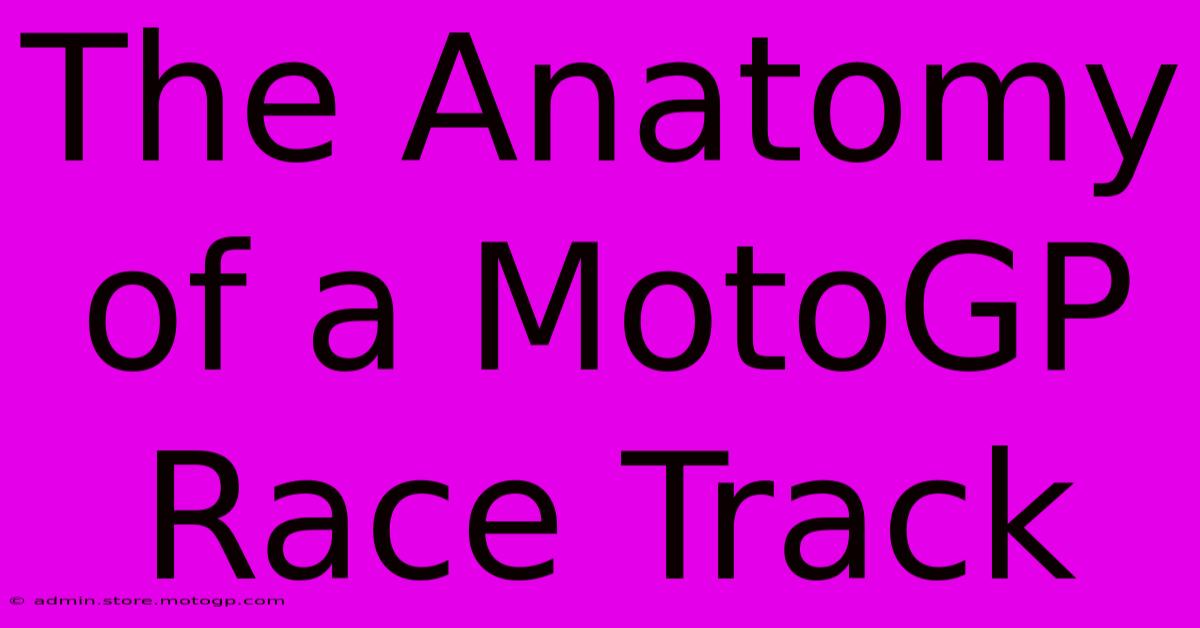The Anatomy Of A MotoGP Race Track

Table of Contents
The Anatomy of a MotoGP Race Track: A Deep Dive into the Design and Features
MotoGP races are spectacles of speed, skill, and precision. But behind the thrilling overtakes and breathtaking speeds lies the intricate design of the race track itself. Understanding the anatomy of a MotoGP circuit is crucial to appreciating the challenges faced by riders and the strategic elements of the race. This article delves into the key features that make up these demanding courses.
Key Elements of a MotoGP Track Design
A MotoGP track isn't just a paved loop; it's a meticulously designed course featuring a variety of elements that test riders' skills and the limits of their machines. Let's break down these key components:
1. Turns: The Heart of the Challenge
Turns are the defining characteristic of any race track, and MotoGP tracks are no exception. They are categorized by several factors:
- Radius: This refers to the curvature of the turn. Tight, hairpin turns require significant braking and precise cornering skills, while sweeping turns allow for higher speeds. The variation in radii is crucial for creating a challenging and engaging track layout.
- Banking: Banked turns help riders maintain higher speeds through corners by tilting the bike and utilizing centrifugal force. The degree of banking varies significantly across different turns on a track.
- Apex: The apex is the most inside point of the turn. A rider's ability to hit the apex cleanly and efficiently is vital for maintaining speed and maximizing exit velocity.
- Turn Type: Turns aren't just simple curves. They can be categorized as decreasing radius (getting tighter), increasing radius (widening), or constant radius turns, each demanding different riding techniques.
2. Straights: Opportunities for Overtaking
Straights provide crucial opportunities for riders to overtake each other, building the drama and excitement of the race. The length and configuration of straights significantly impact the race strategy. Longer straights favor bikes with superior top speed, while shorter straights require better acceleration and agility.
3. Elevation Changes: Adding Another Layer of Complexity
Many MotoGP tracks incorporate elevation changes, adding another level of difficulty and excitement. Hills and valleys impact braking, acceleration, and cornering, demanding precise control and anticipation from the riders.
4. Run-off Areas: Safety First
Safety is paramount in MotoGP. Wide run-off areas beyond the track's edge are designed to provide a safe space for riders to recover from mistakes, reducing the risk of serious accidents. The type and design of run-off areas, including gravel traps and asphalt run-offs, vary depending on the specific corner and track conditions.
5. Pit Lane: The Heart of the Support Crew
The pit lane is where the pit crews work tirelessly to perform lightning-fast tire changes and bike adjustments. Its design is crucial for efficient pit stops and minimizing time losses during the race. The length and configuration of the pit lane can influence race strategy.
Track Design Influences on Racing Strategy
The design of a MotoGP track significantly influences the race strategy. Tracks with numerous tight corners may favor bikes with superior handling, while tracks with long straights and sweeping corners might benefit bikes with higher top speeds. Understanding these design nuances allows teams to optimize their bike setup and race tactics.
Famous Examples of MotoGP Tracks and Their Unique Features
Several MotoGP tracks are renowned for their unique characteristics:
- Mugello Circuit (Italy): Known for its fast, flowing corners and long straights.
- Assen TT Circuit (Netherlands): A historic track with a mix of fast and technical corners, famous for its challenging layout.
- Red Bull Ring (Austria): Features a long straight and a series of fast, flowing corners.
- Sepang International Circuit (Malaysia): A high-speed track with long straights and demanding corners.
Each track presents a unique set of challenges, requiring riders to adapt their riding style and strategies to achieve success.
Conclusion: More Than Just Asphalt
The anatomy of a MotoGP race track is a complex interplay of design elements that contribute to the thrilling races we see each year. Understanding these elements enhances our appreciation for the skill, precision, and strategy involved in this high-octane motorsport. The combination of turns, straights, elevation changes, and safety features create a challenging and engaging environment that demands the very best from both the riders and their machines.

Thank you for visiting our website wich cover about The Anatomy Of A MotoGP Race Track. We hope the information provided has been useful to you. Feel free to contact us if you have any questions or need further assistance. See you next time and dont miss to bookmark.
Featured Posts
-
Experience The Energy Of Cota Motorcycle Track Days
Feb 19, 2025
-
Race Bikes For Sale Get Ready To Race
Feb 19, 2025
-
Stream Moto Gp Live Watch From Anywhere
Feb 19, 2025
-
Cota Austin Schedule Dont Miss A Single Event
Feb 19, 2025
-
F1 Ratings Separating Fact From Fiction
Feb 19, 2025
